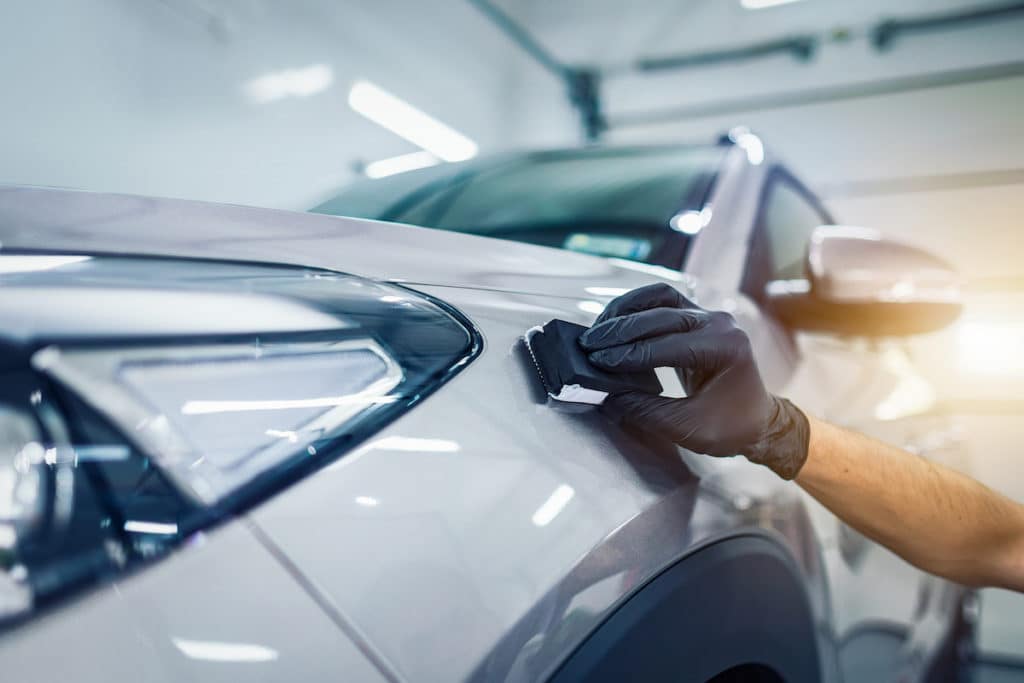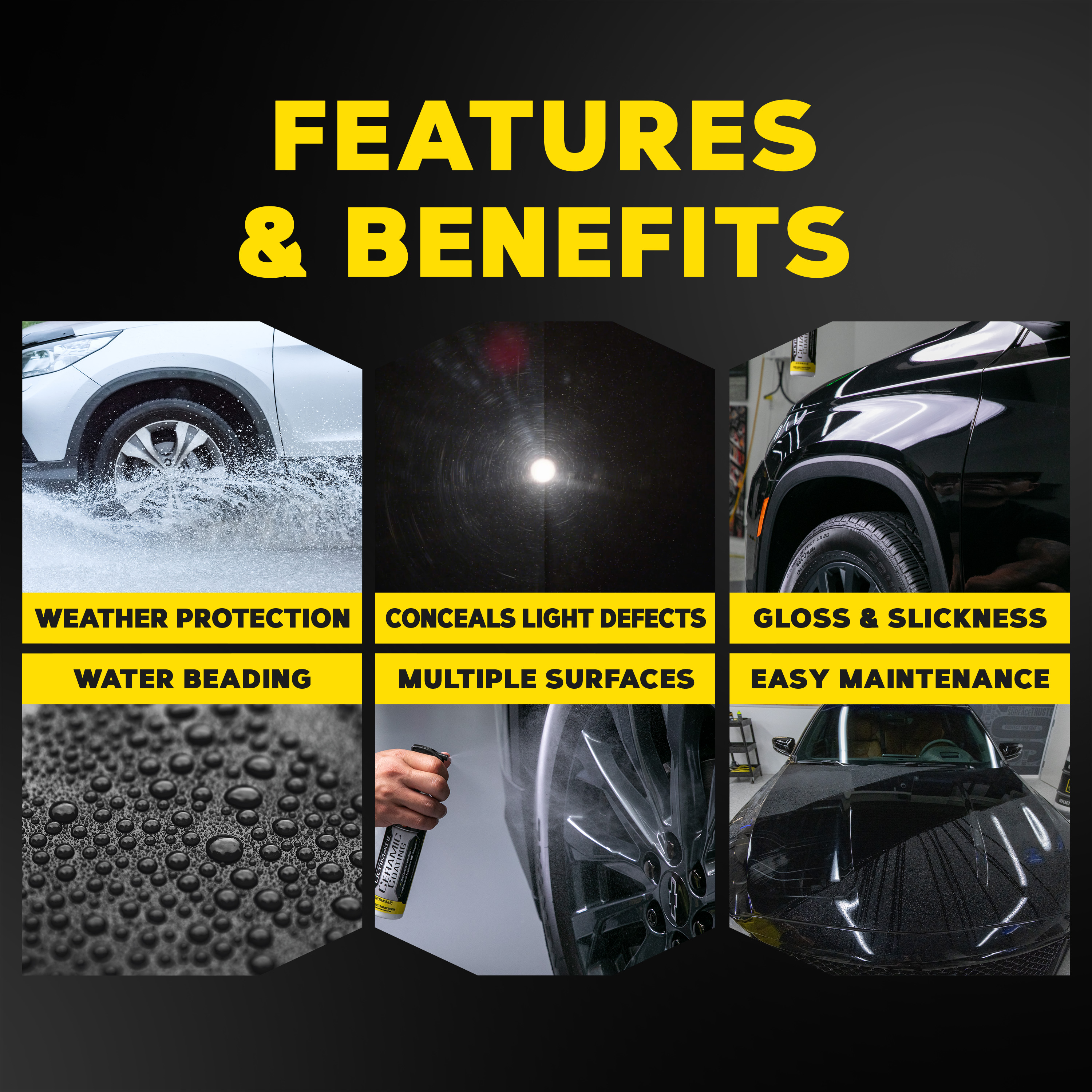Why Ceramic Finishing Is the Ultimate Remedy for a Remarkable End Up
Ceramic finish has actually emerged as a leading service for those looking for a remarkable surface for their automobiles, thanks to its remarkable longevity and protective attributes. What factors absolutely set ceramic coating apart?
What Is Ceramic Covering?

When applied correctly, ceramic covering develops a hydrophobic surface area that pushes back water and dust, making it easier to cleanse and preserve. Unlike typical waxes or sealants, which typically provide brief defense, ceramic finishings can last for several years, depending on the item quality and application method. The procedure of using ceramic covering requires meticulous prep work, including detailed cleansing and sometimes repaint correction, to make certain optimum bonding and efficiency.
Ceramic coatings are not limited to vehicle surfaces; they can also be made use of on numerous products, consisting of glass, steel, and plastics, supplying a versatile option for boosting security. On the whole, ceramic layer stands for a substantial development in surface protection modern technology, integrating both practical and aesthetic advantages for a wide variety of applications.
Benefits of Ceramic Finishing
While several surface area defense options exist, the benefits of ceramic finishing stick out as a result of its unique buildings and durable efficiency. One of the primary advantages is its phenomenal sturdiness. Ceramic Coating Philadelphia. Unlike conventional wax or sealants that require regular reapplication, ceramic finishings provide a resistant layer that can last for numerous years, significantly minimizing maintenance efforts
An additional noteworthy advantage is enhanced protection versus ecological pollutants. Ceramic coverings produce a hydrophobic surface area that fends off water, dust, and various pollutants, making it less complicated to clean. This function not only protects the car's appearance yet additionally minimizes the risk of deterioration and oxidation, specifically in rough climate condition.
In addition, ceramic finishes offer premium resistance to UV rays, stopping fading and degradation of paint gradually. This UV security is important for preserving the aesthetic worth of automobiles and surfaces revealed to direct sunlight.
Additionally, the glossy coating accomplished with ceramic finish enhances the overall aesthetic appeal, providing surface areas a showroom-quality shine. Overall, ceramic coverings stand for a significant innovation in surface defense innovation, offering long-lasting advantages that deal with both aesthetic and useful requirements.
How It Functions
Recognizing the scientific research behind ceramic layers exposes exactly how they offer such exceptional security and longevity. At its core, a ceramic covering is a liquid polymer that chemically bonds with the lorry's manufacturing facility paint. This bonding creates a protective layer that is both hydrophobic and oleophobic, repelling water, dust, and oil. The primary part of most ceramic coverings is silicon dioxide (SiO2), which is stemmed from quartz. This compound adds to the coating's firmness and resistance to scratches, UV rays, and ecological pollutants.
The application procedure involves several actions, consisting of surface preparation, which is critical to accomplishing optimum bond. When used, the coating undertakes a healing process, throughout which it hardens and creates a semi-permanent bond with navigate here the paint surface area. This bond is what distinguishes ceramic coverings from conventional waxes and sealants, offering a longer-lasting protective barrier that can endure for several years.
Furthermore, the density of the finish can boost its safety qualities, making sure that it can endure extreme problems. Inevitably, the scientific research of ceramic coatings integrates innovative products with innovative application methods to supply an unmatched degree of defense and visual enhancement for automobiles.
Contrast With Typical Approaches
When compared to standard paint defense techniques such as waxes and sealants,The benefits of ceramic finishings end up being especially obvious. While waxes use a momentary luster, typically lasting a couple of weeks to a number of months, ceramic finishes supply a resilient safety layer that can endure for several years. This durability substantially lowers the frequency of reapplication, making ceramic finishings a more economical remedy over time.
Additionally, standard approaches typically call for extensive prep work and several applications to accomplish a satisfying degree of protection. In contrast, ceramic coatings bond at a molecular degree with the car's surface area, creating a durable shield against ecological contaminants like UV rays, acid rain, and road salts. This bond enhances the lorry's resistance to scratches and swirl marks, which are widespread with traditional waxes and sealants.
In addition, the hydrophobic buildings of ceramic finishings push back water and dust, resulting in simpler cleansing and upkeep. In contrast, wax and sealant-treated surface areas can attract gunk, demanding more frequent washing - Ceramic Coating Philadelphia. Generally, ceramic layers not only supply premium protection but likewise deliver an extra enduring and aesthetically attractive finish, establishing them as the recommended option for discerning car proprietors
Application and Upkeep Tips

Using a foam applicator, apply the coating in tiny sections, complying with the producer's standards concerning thickness and overlap. Enable adequate healing time between coats, commonly 24-hour, to ensure appropriate bonding. After application, it is important to prevent direct exposure to water or rough elements for at the very least a week to allow the covering to fully heal.
In addition, utilizing a ceramic maintenance spray can boost the covering's hydrophobic homes and long life. Routine evaluations for any indicators of wear will help maintain the finishing's stability and preserve that pristine finish.
Conclusion
Finally, ceramic layer arises as a remarkable alternative for accomplishing a flawless automotive finish. Its remarkable resilience, safety top qualities, and hydrophobic homes considerably boost the car's appearance while streamlining maintenance initiatives. By developing a durable bond with factory paint, ceramic finish successfully guards against scratches, UV rays, Visit Website and environmental contaminants. With a lifespan expanding several years, this advanced solution not just maintains yet also raises the total visual allure of automobiles, making it an affordable financial investment for auto fanatics.
